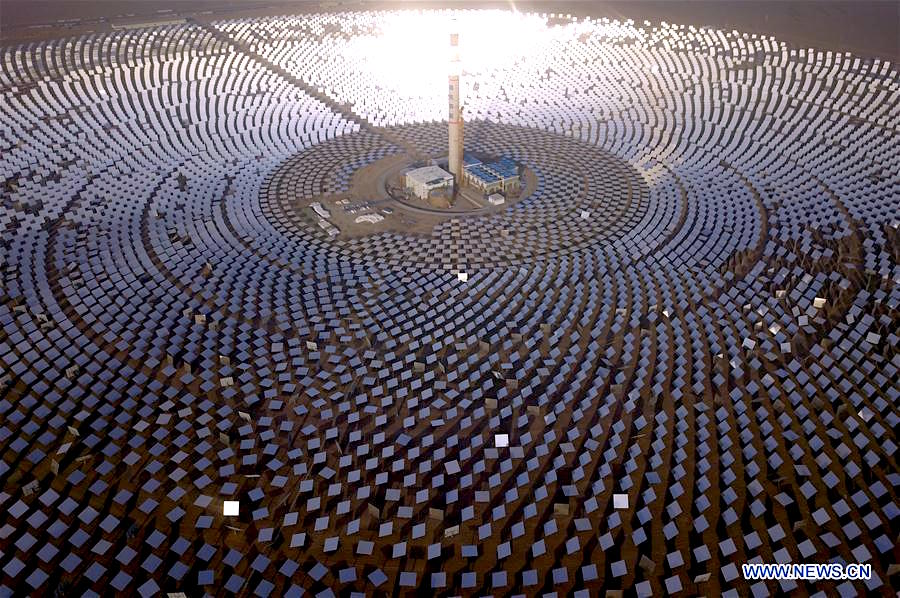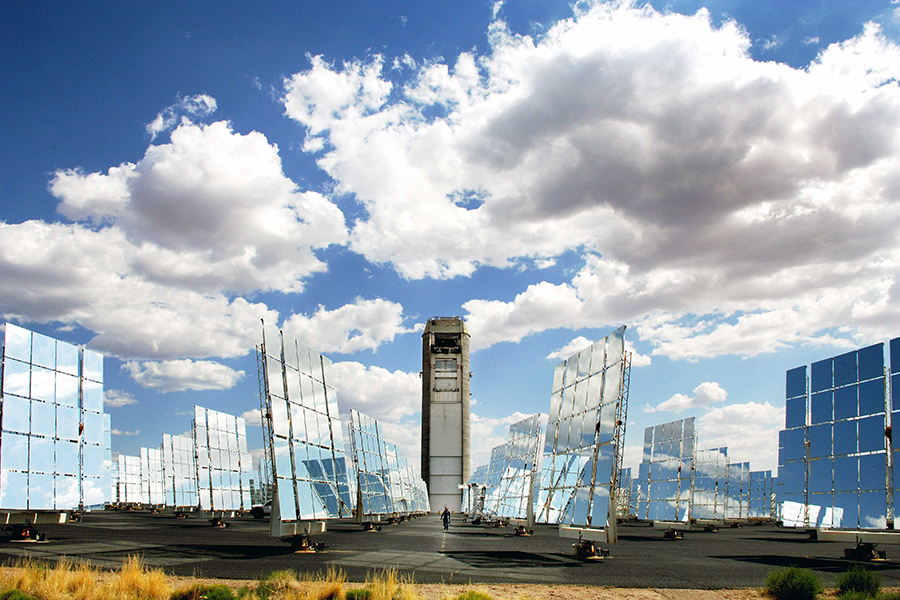
Here, thousands of heliostats encircle the solar receiver atop the tower in Tower CSP. A big opportunity for careers in solar engineering is in heliostat design and requires talent in AI, robotics, and optics
Most renewable energy technologies are now at the commercial level: Their innovation stage is over. Careers now tend to be more in construction, factory production, logistics, or sales.
However, in one solar technology, there is still the need for the innovative. In Tower Concentrated Solar Power (CSP), where a solar field of heliostats encircles a solar receiver atop a central tower, innovation is still needed to reduce heliostat costs to enable deployment growth. The heliostats account for about 30% of the cost.
“There’s still a need to continue innovation in heliostats,” noted Rebecca Mitchell, a researcher at the Concentrating Solar Power (CSP) division of the Thermal Energy Science & Technologies Group at the National Renewable Energy Laboratory (NREL).
“The current solar field cost is around $100/sq m, and one of the major goals is to get that down to $50. So there’s a lot of room for continued Innovation.”
Optics and robotics control each heliostat’s movement at its position in the solar field. This is to continually adjust the angle at which it reflects sunlight, to keep the reflection of the moving sun focused on the tower’s solar receiver.
Innovation in heliostat engineering is still needed…
Partly because relatively few Tower CSP plants have been built, heliostat designs still vary from plant to plant. Trough dominated the earliest projects, while Tower – the kind that uses mirrors around a tower – is still in a more nascent stage of commercial deployment.
…and the need for this solar technology will rise
As wind and solar energy become more common, there is a growing need for power that can be dispatched when needed. CSP is a good option because it can store heat for a long time. This makes it essential for the future of our energy grid because, as a solar thermal power station, CSP stabilizes the grid as it has a rotating mass like the legacy thermal power stations. But these fossil-fueled power stations are being phased out as climate concerns mount.
Also, this form of solar energy will increasingly play a part in supplying renewable heat directly to industrial processes that have depended on fossil fuels for high-temperature heat. This is because Tower CSP can produce solar heat at up to 1,500°C.
These two factors, the need for innovation and the expected rise in future demand, mean Tower CSP now offers the most intellectually rewarding career in renewable energy innovation.

Sandia Laboratories’ test site engages researchers in advancing innovative Tower CSP components like these faceted heliostats to lower costs
HelioCon
To meet this need to attract new talent to solar innovation careers in heliostat engineering, Mitchell’s team at NREL developed materials at their new site HelioCon to educate a new generation of solar researchers. The effort is created by a consortium that includes the Department of Energy (DOE)’s Solar Energy Technology Office (SETO), Sandia, and NREL in the US with ASTRI, the Australian Solar Thermal Research Institute.
“We focused on creating this online resource database to increase the accessibility of knowledge,” she explained. “Our core team is looking into developing resource material to make it easier for newcomers coming into the field to get on-boarded with the information they need to get involved.”
A STEM background is needed for these solar innovation careers
Her advice for those who want to join this research field is: “Coming out of high school, you need strong math and physics skills. And even coding or programming experience. All of those translate into the type of degrees and the kind of skills that we need. So those are the sorts of fields where we’re interested in trying to draw in more students coming out of high school. Then you’ll get more specific courses like engineering coursework in college, like in optics and robotics.”
The industry needs mechanical engineering, machine learning, robotics, and AI talent for heliostat innovation. But she noted that materials science degrees are also valuable for developing thermal energy storage and heat transfer materials, which are also needed to cut CSP overall costs.
“So we’re interested in a variety of fields ranging from various engineering disciplines,” she commented. “All the things that are going to help us progress technology in the area. It’s multidisciplinary, requiring mathematics, mechanical engineering, and physics skills.”
SETO and both renewable laboratories, NREL and Sandia take on interns who want to get into renewable energy careers. They have attracted very strong applicants with the engineering talent and software development skills that Tower CSP needs. HelioCon offers introductory training on its website in the NREL-developed optical ray trace modeling tool SolTrace.
Tower CSP is a little-known renewable field
“While many college and high school students want to go into renewable energy, the issue is that a lot of people you come across have not heard of this technology,” Mitchell commented. “The research community is small and largely concentrated at a few different institutions, and knowledge is not widely accessible. And so part of it is just addressing the issue that it’s just not widely known.”
The HelioCon presentation at the 2022 SolarPACES Conference noted the need also to provide a heliostat reference library accessible to newcomers.
They have now partly assembled an extensive library of journal publications that’s now publicly available on the website. However, academic papers can be daunting for a general audience. So the team is currently working on generating information about heliostat innovation needs and challenges in a more accessible language.














































